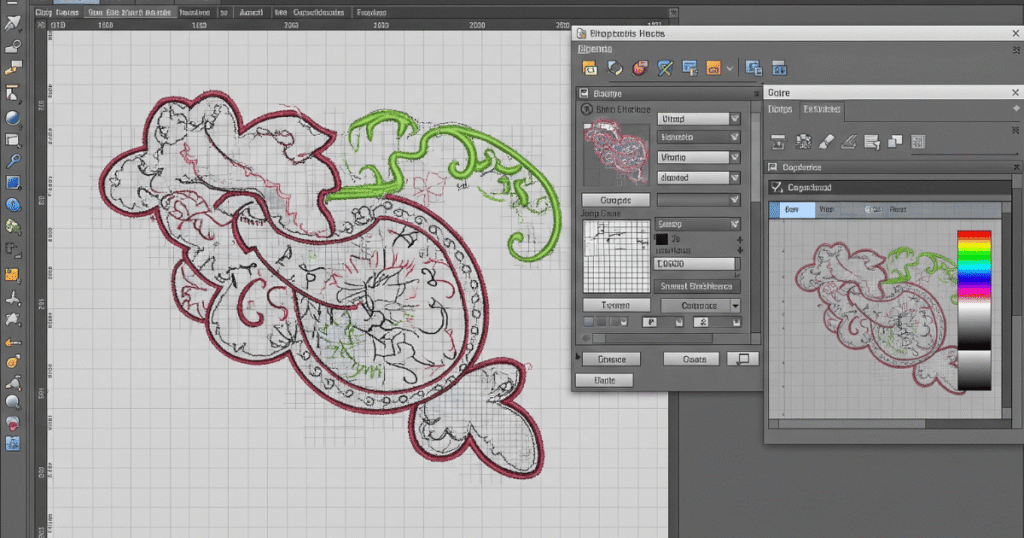Once upon a time, embroidery was a labor-intensive craft confined to traditional artisans and slow, manual stitching. Local shops worked for days or weeks on a single design, and customization was limited to thread colors and font choices. Fast forward to today, a small embroidery studio in Colorado completed a 500-piece order of intricate custom patches in less than 48 hours — all thanks to a little-known yet rapidly evolving method: applique embroidery digitizing.
This story is becoming more common across the industry. Whether you’re a small apparel brand, a fashion designer, or an Etsy seller with a growing customer base, this technique is redefining how embroidery is created, scaled, and sold.
Applique embroidery digitizing isn’t just another buzzword. It’s a revolution in the design-to-stitch process.
What Is Applique Embroidery Digitizing?
At its core, applique embroidery digitizing is the process of converting artwork into a digital embroidery file that directs machines to sew fabric pieces (appliques) onto a base material. Unlike full-thread embroidery, which relies entirely on stitching, applique uses cut-out fabric shapes for areas of color or design — saving time, thread, and cost while maintaining texture and quality.
This technique doesn’t just reduce production complexity — it increases creative possibilities. Designers are no longer restricted by stitch density or thread blending. They can introduce patterns, textures, and materials that embroidery machines alone could never replicate.
Why Is It So Popular Right Now?
According to a 2023 survey by IBISWorld, custom embroidery services in the U.S. saw a 12.7% increase in demand from small businesses and online sellers. Digitizing services like applique saw the most growth due to their affordability and versatility.
The rise in popularity can be attributed to several key factors:
- Speed and Scalability: Applique designs stitch faster than full-thread designs, allowing for quicker turnarounds without sacrificing quality. That means lower costs and higher profit margins.
- Visual Appeal: Applique adds a rich texture and dimensional contrast to garments, making designs stand out in a crowded marketplace.
- Cost Efficiency: Using fabric pieces reduces thread consumption and machine time, which lowers overall production expenses.

Who Is Using Applique Embroidery Digitizing?
Applique digitizing has gained traction among several key audiences:
Fashion brands are using it to create limited-edition apparel that looks hand-crafted but scales like mass production. Small businesses are adding logos to caps, bags, and jackets using bold applique lettering. Independent artists are experimenting with layered textiles to bring their hand-drawn illustrations to life.
Etsy sellers and local crafters also benefit. A small operation with a single embroidery machine can offer intricate designs without investing in hours of stitching. That’s a competitive edge in a market where speed and creativity mean everything.
Even nonprofits and schools are leveraging applique for merchandise like team uniforms and fundraiser apparel. It provides a professional, high-end look without blowing the budget.
The Technical Side: What Makes a Good Applique File?
Behind every clean stitch and sharp corner is a well-digitized file. Professionals use industry-standard software to manually adjust stitch direction, pull compensation, and fabric placement lines. This ensures that the design holds up on various fabrics, whether it’s soft cotton or durable canvas.
Even a slight miscalculation in layering or underlay stitching can result in frayed edges or distorted shapes. That’s why it’s crucial to work with experienced digitizers who understand not just the software, but the embroidery machine behavior itself.
Choosing the Right Partner for Your Applique Projects
Whether you’re just getting started with embroidery or you’re scaling production for your apparel line, having a reliable digitizing partner is essential. Professionals trained in applique digitizing understand how to balance design complexity with machine efficiency, ensuring that your final product is not only visually stunning but production-friendly too.
If you’re searching for a trusted provider that offers applique embroidery digitizing tailored to your needs, choosing the right service can be the difference between patchy results and pixel-perfect detail.
They typically support a wide variety of file formats — EMB, DST, PES, and more — ensuring compatibility with most embroidery machines. They’ll also accommodate different fabric types and adjust tension, stitch density, and trimming commands based on your project’s unique needs.
Where the Industry Is Headed
Applique embroidery digitizing is not a trend — it’s part of a broader shift in how textile design is being approached in the digital age. Automation and creative software tools are empowering designers and businesses to do more with less.
Sustainability also plays a growing role. By using applique instead of high-density stitching, designers can reduce waste and energy usage — a small but meaningful step toward more eco-conscious apparel production.
And with the growing popularity of personalization, consumers want garments that feel unique. Applique is a perfect middle ground between handmade charm and machine-made precision.

Final Thoughts
Whether you’re designing bold statement pieces, branding apparel for your business, or exploring creative merchandising, applique embroidery digitizing opens up new horizons in quality, speed, and affordability. It’s one of those rare innovations that benefits both creators and consumers, allowing ideas to move from sketch to stitch with stunning clarity.
So, how will you use applique embroidery digitizing to bring your next project to life?



